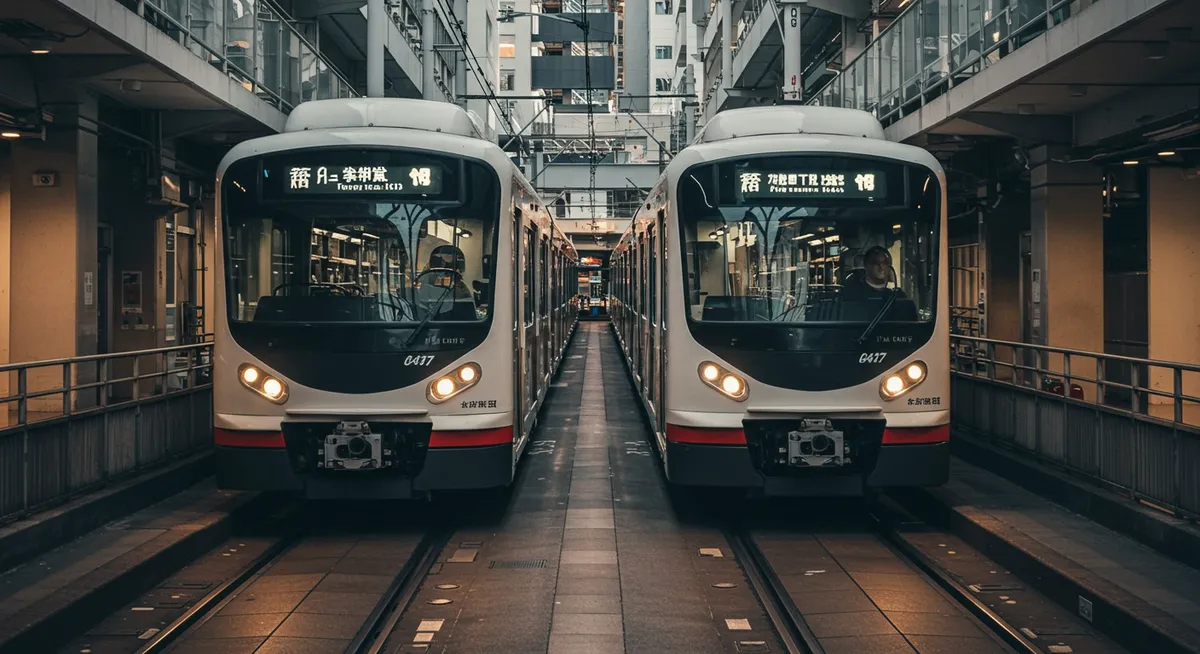
Tokyo Public Transport System: How to Use It
Table of Contents
Want to find the best travel deals for this destination? Chat with our travel hacking specialist!
Get Travel HacksCategory: tokyo-public-transport-system-how-to-use
Mastering Tokyo's Public Transport: Your Essential Guide
Having navigated Tokyo's intricate transit network countless times, I can confidently say that understanding its public transport system is key to unlocking the city's wonders. Despite its initial complexity, mastering the various lines and payment methods quickly transforms daunting commutes into efficient journeys. This guide breaks down everything you need to know, from purchasing tickets to understanding the different rail lines, ensuring a seamless travel experience during your visit.
Getting Started: IC Cards & Tickets
The foundation of effortlessly using the Tokyo public transport system lies in acquiring an IC card. Suica and Pasmo are the most common, acting as rechargeable smart cards for seamless travel on trains, subways, and buses. You can easily purchase and top-up these cards at ticket machines in any station, which often offer English language options. For single journeys, paper tickets are available, but expect a slight learning curve with the fare adjustment machines. My personal tip: always have your IC card sufficiently charged to avoid delays, especially during peak hours. Budgeting for transport is easy when you use these cards; learn more in our Tokyo travel budget breakdown.
Navigating the Subway and JR Lines
Tokyo’s vast rail network comprises numerous lines, primarily operated by Tokyo Metro, Toei Subway, and Japan Railways (JR). The Yamanote Line, a JR loop line, is incredibly convenient for reaching major hubs like Shinjuku, Shibuya, and Ueno. Understanding the color-coded lines and numbered stations on maps is crucial for the Tokyo public transport system. These maps are widely available at stations and online. Remember to check which line you are boarding, as platforms often serve multiple routes. When I first visited, I found the English signage surprisingly clear, making subway navigation less intimidating than expected. For a deeper dive into exploring the city, check out our comprehensive Tokyo travel guide.
Understanding Fare Zones & Transfers
Fares within the Tokyo public transport system are calculated based on distance, and while complex, IC cards simplify this by automatically deducting the correct amount. When transferring between different companies (e.g., JR to Tokyo Metro), you might need to exit one gate and enter another, even within the same station complex. Look for clear transfer signs. Many popular apps, like Google Maps, are invaluable for planning routes and showing exact fares and transfer points, including for bus routes which extend reach to areas like Daikanyama. My experience suggests that staying within walking distance of a major JR or subway station can vastly improve your travel convenience, as detailed in our guide on where to stay in Tokyo.
Tips for Stress-Free Travel
For an optimal experience with the Tokyo public transport system, avoid rush hour (7:30–9:30 AM and 5:00–7:00 PM) if possible, as trains can be incredibly crowded. Always stand on the correct side of escalators (left in Tokyo, right in Osaka). Be mindful of priority seats and loud conversations; silence is generally observed on trains. Utilise apps like Japan Transit Planner for real-time schedules and platform numbers, ensuring efficient travel throughout the city. I've found that planning my day's itinerary around train lines saves considerable time and energy. Consider the best time to visit Tokyo for less crowded transport, which is covered in our best time to visit Tokyo guide.
Frequently Asked Questions
What is the best way to pay for Tokyo public transport?
Are there English signs on Tokyo's subway?
Is the Tokyo public transport system difficult to use for tourists?
Navigating the Tokyo public transport system is an integral part of experiencing Japan’s vibrant capital. By familiarizing yourself with IC cards, understanding the extensive network of JR and subway lines, and employing smart travel habits, you’ll unlock a seamless way to explore every corner of this incredible city. Embrace the efficiency and punctuality, and you'll find that getting around Tokyo is not just a means to an end, but an enjoyable part of your adventure.